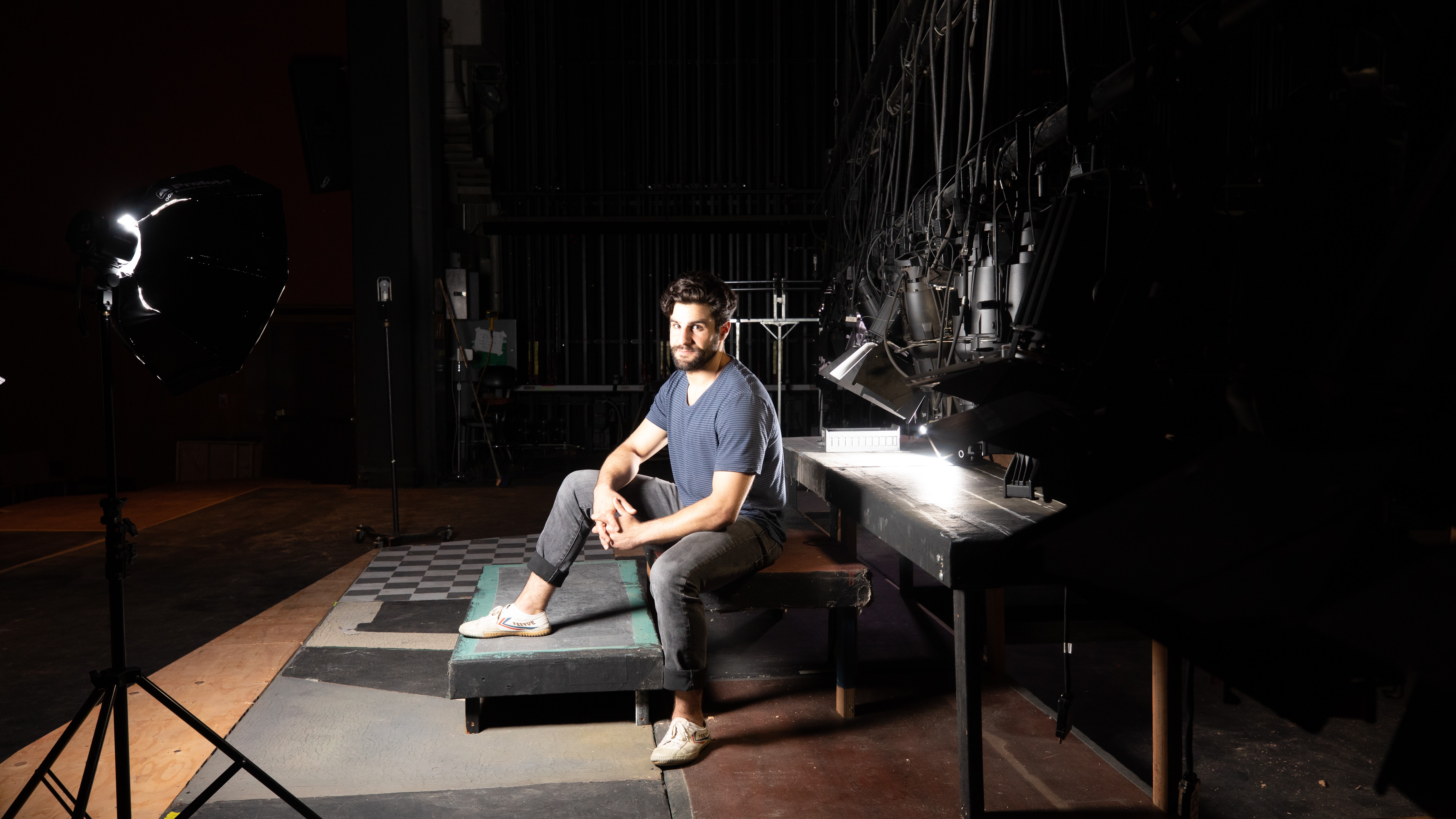 Chris Kamas, artistic director for The Fountain, says adapting the play's format showed creativity and willingness to collaborate among senior theater students. (Sacramento State/Andrea Price)
Chris Kamas, artistic director for The Fountain, says adapting the play's format showed creativity and willingness to collaborate among senior theater students. (Sacramento State/Andrea Price)
By Ahmed V. Ortiz
COVID-19 eliminated the opportunity for the seniors in Sacramento State’s Department of Theatre and Dance to see their Senior Capstone production, The Fountain, play out on stage this spring.
With their usual medium lost, though, they adapted, converting The Fountain, a 65-page, student-produced rumination on human nature, interaction and relationships, into an audio-only production.
"It really goes to show how determined, hardworking and stubborn performers are,” said Erika Alvarez, the play’s media director who also appears in one of its vignettes.
The change is a testament to the creativity and collaborative ability of the seniors, said Chris Kamas, the play’s artistic director. The idea of converting it into an audio-only format struck him when he stumbled upon an audio-captioning feature on a streaming platform. By adding more descriptive elaboration than found in a typical stage script, it seemed doable, Kamas said.
Classmate Erika Brown, who has worked at community playhouses, told the group she could capture sound of the actors playing their scenes in online meetings and paste together audio files into a singular experience.
This year’s seniors, Kamas said, also didn’t have the luxury afforded some past cohorts of performing an already existing work. COVID-19 slowed them not one bit.
"It's kind of unreal how well this group works together,” Kamas said.
In addition to a full script, the students also developed a pitch package featuring design concepts, casting requirements and allocation of a hypothetical $1,200 budget. Production manager Jennifer Coffey, a former host on student-run radio station KSSU, brought a little radio experience.
The Fountain was written collaboratively by the senior cohort, with Shanti Moore and Donald Glass serving as leads. It follows an outline Moore drafted from ideas generated in workshops and in brainstorming sessions conducted among the senior class, and developed in close consultation with Kamas, who called it an “homage to theater itself” by the class.
It begins in a chaotic backstage scene as actors and other personnel prepare for a show. A monologue that Kamas said somewhat recalls the riverboat ride at the beginning of Willie Wonka and the Chocolate Factory begins, but instead of “stop the boat” the narrator says “Start the show.”
The scene moves to a celestial realm where the audience meets Comedy and Tragedy, the ancient Greek theatrical gods of writing. They stand before and stare into a fountain, where they observe life and from which they derive their tales. They witness an act of love that resonates with them unlike anything prior.
This inspires them to try to make physical contact with each other, but they are pushed apart by what Kamas called a “force of balance.” So they try to reach across the fountain, but fall in. As they do Tragedy says, “I’ll find you,” and Comedy replies, “I believe you.”
The audience then is taken through a series of interactions between pairs of people at different points in time – in the 1960s, a biracial couple; in the ’40s, siblings consigned to different fates in WWII; and so forth. In each vignette, the characters experience intensifying feelings of familiarity, but just as they near a breakthrough, they are pulled apart.
At its conclusion, the production moves from the past to the very near future, 2022.
“The characters change in every scene, but there’s still a similarity,” Coffey said.
In each scene, they are confounded by their seeming familiarity. The script, through use of key repeating phrases, provides hints to the audience about what is happening.
Alvarez, Coffey and Kamas all agree the experience has been valuable. Still, The Fountain was meant for the stage. To that end, the graduating class has bequeathed the script to Theatre and Dance for future students to use.
“If it is produced in the future,” Kamas said, “it would be specifically by the next generations of Sac State Theatre students.”
For her part, Alvarez carried the fire of that stubborn performers’ streak.
“The show must go on,” she said. “We don’t need a stage, and here’s how we proved it.”
